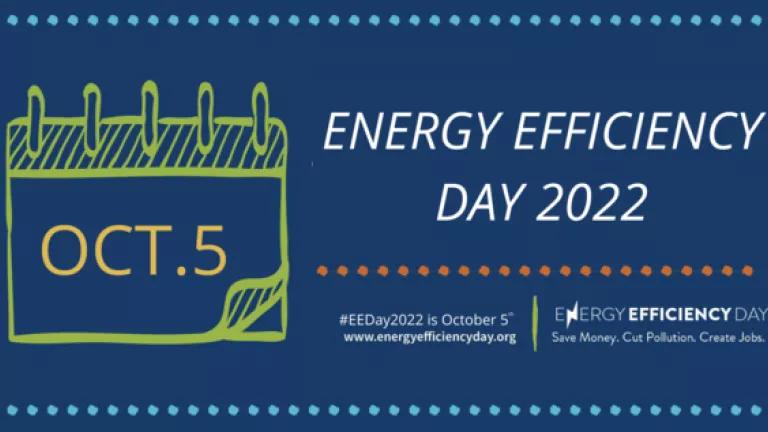Energy Dept. Grid “Study”: Politics Trump Facts

Secretary of Energy Rick Perry has directed his agency to conduct a hurried review of how environmental protection standards and clean energy incentives are apparently threatening to bring our power grid to its knees. That action shows either a lack of understanding as to how grid operators (including the one back in his home state of Texas) are successfully integrating abundant, reliable, and carbon free wind and solar energy resources, or simply a desire to fulfill a Trump campaign promise to boost coal over clean energy.
In his memo, Perry took special aim at wind and solar power, claiming these resources are causing the “erosion” and premature retirement of vital “baseload” coal plants. Twisting the knife some more, he recently said at an energy conference that the federal government might have to override state clean energy policies in the name of national security—again, to protect baseload coal power.
Playing the (false) reliability card is a well-worn tactic of the coal industry and its supporters, and now the government seems to be buying into it. We heard it when the U.S. EPA proposed the Clean Power Plan in 2015, when the industry claimed falsely that the plan would threaten reliability by closing coal plants. Now the Department of Energy is playing the card to attack clean energy federal tax incentives and state clean energy standards.
Politics trumps facts
What’s the real reason for Perry’s gambit? Pure politics. He has said that his agency’s review will “end the war on coal,” and his intention is to “let our resources compete on prices.” His memo calls out the “market-distorting effects of federal subsidies” that favor clean energy over dirty energy he calls uniquely reliable. In truth, the agency is simply fulfilling Trump campaign promises to rescue coal power.
Perry conveniently avoids mentioning the significant fossil subsidies hidden in the federal tax code and in preferential zoning and mining lease deals—subsidies that have cumulatively overwhelmed those for wind and solar energy production. Nor does he mention the human health and environmental toll of fossil fuels.
Perry also claims that the decline in coal power has created a less diverse and riskier energy resource mix than in the past. That’s false; the grid is more diverse now than a decade ago, with less coal, more natural gas, more wind and solar power, and a slight drop in nuclear power. And far from disappearing as Perry apparently fears, coal is the still the second largest fuel source for electricity in the U.S., just behind natural gas.
On the customer side, energy efficiency is squeezing more power out of every megawatt-hour of electricity. Rooftop solar, community solar gardens, electric vehicles, batteries, and other forms of storage also are changing the supply mix for the better.
This diverse mix is contributing to a more reliable and resilient transmission grid while empowering customers to make their own energy decisions to serve their evolving needs for electricity for America’s homes, smartphones, cars, and workplaces.
Clean energy supports our lifestyle
What kind of a grid system is necessary to reliably support our evolving lifestyle and power needs? A flexible and dynamic grid—one that can adapt quickly to changing conditions in the system to give us more choice and control. This means, for example, a grid capable of responding to second-by-second and minute-by-minute changes caused by a customer plugging in an electric vehicle, turning on a laptop, powering up a factory, or any of the increasing uses of electricity in our digitized world.

Clean power is good for the grid
Wind and solar power contribute to a dependable power supply, help to prevent blackouts and other grid disturbances, and create a more flexible and diverse generation fleet. Just one of many examples: the California grid operator, which manages a grid with the highest levels of solar power in the country, confirms that solar energy can provide many grid reliability services. In fact, renewable resources often can provide reliability services better than conventional gas or coal resources. We also know that we -are now able to power our country mostly with wind and solar power.
Instead of clinging to a dirty, riskier, and outdated electric system dependent on coal—which is like choosing a typewriter over a laptop in 2017—Secretary Perry should look at what is already happening around the country, where renewable resources provide clean, affordable, and reliable energy. For example, wind energy in Texas often provides more 30 percent or even 40 percent of the state’s daily power needs throughout the entire day:

Perry should know; he approved the buildout of new transmission that helped make Texas the number one producer of wind power in the country.
Power markets need to adapt to cleaner energy
Perry’s memo also suggests that current wholesale power markets aren’t sufficiently rewarding the reliability benefits of baseload resources. Again, he’s pining for a return to the past instead of embracing our current reality, let alone the future. As we’ve said before, wholesale markets increasingly need to be designed around a lower-carbon resource mix to continue to encourage investment in them and ensure reliability.
Markets certainly should reflect the value of state energy policy choices in new wind and solar, rather than devaluing or excluding them. While Perry focuses on how certain minor aspects of the markets fail to give baseload resources full credit (on-site fuel storage of coal, oil, and uranium fuel does support grid reliability, for example), he entirely skips over the many ways these resources are already over-credited in the markets or receive their own subsidies (which, unlike renewables incentives, are often not justified by societal benefits).
What the experts say
What do the grid operators say about renewable energy’s reliability? It doesn’t appear as though Perry consulted them before ordering the review, which is a shame because they have years of experience reliably integrating renewable energy resources into the system. For example, PJM, the nation’s largest grid operator, says its grid can handle far higher levels of renewable energy than currently are on its system.
PJM also found that more wind and solar can contribute to grid reliability and resiliency, even during extreme conditions such as a “polar vortex.” One reason is that renewable resources can continue operating since they don’t depend on fuel deliveries and other fossil vulnerabilities. PJM, which reliably dispatches over 1,000 generating units every day (so it knows reliability), also found virtually no reliability issues with 30 percent wind and solar output in its region.
Secretary Perry is aiming for a lose-lose-lose outcome: more carbon pollution, a misguided federal power play to usurp states’ clean energy choices, and higher costs. Preserving the states’ ability to steer us to a cleaner energy future is especially important now given the administration’s hostility to fighting climate change. We hope he reconsiders his approach, and remembers his roots in Texas, where wind is now king.
This blog provides general information, not legal advice. If you need legal help, please consult a lawyer in your state.




